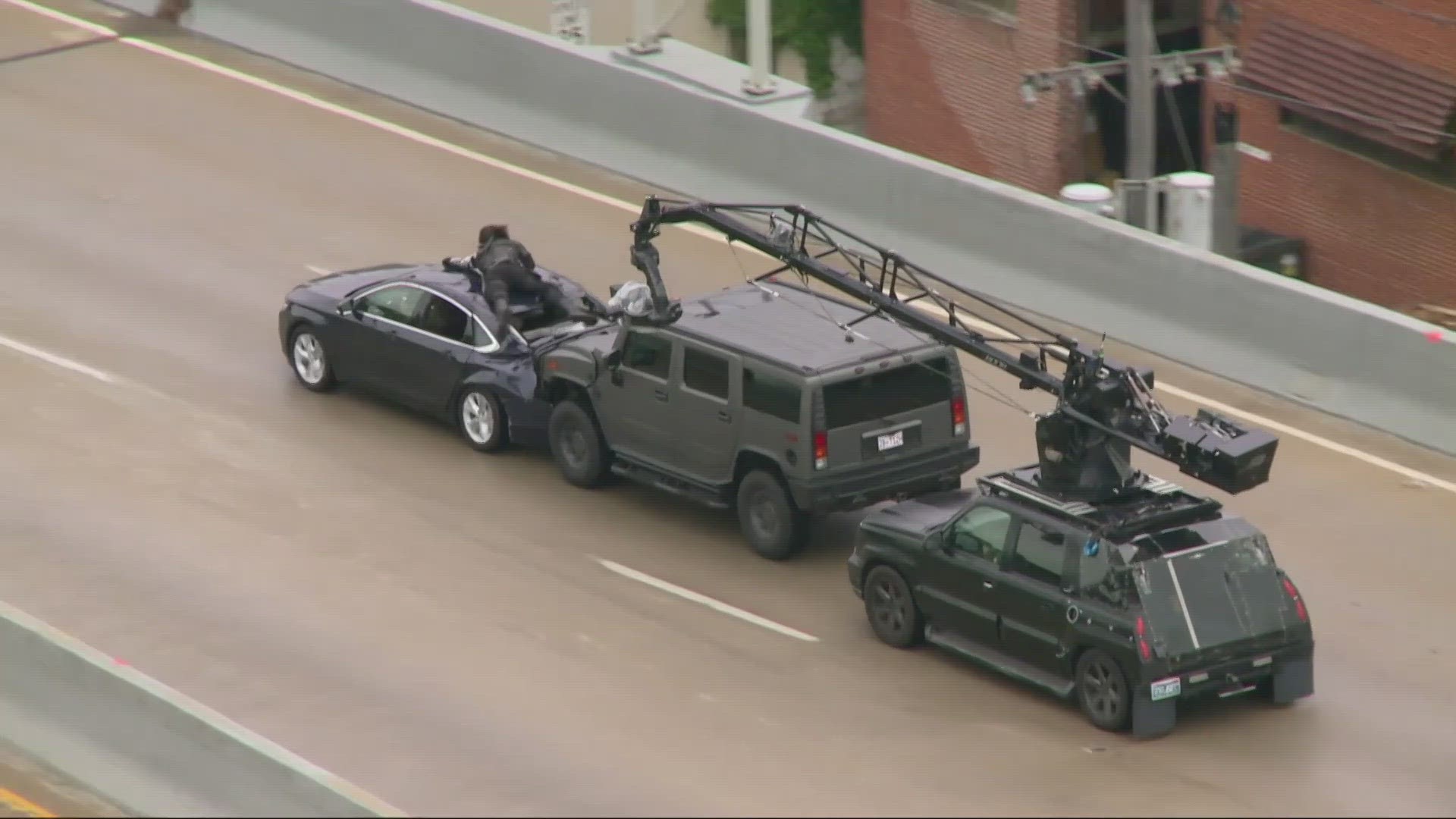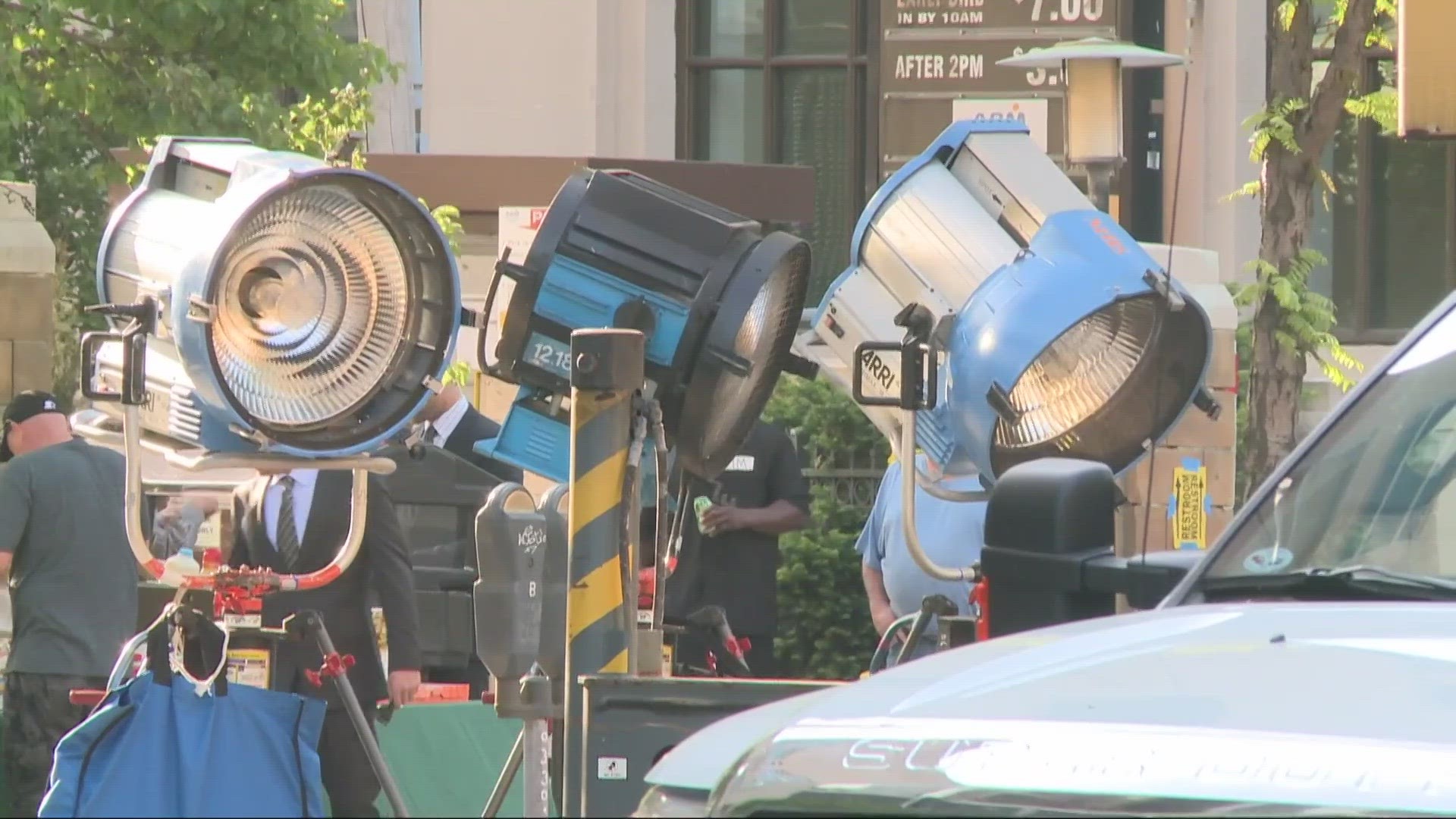CLEVELAND — The push to bring more Hollywood to Cleveland has hit a snag in the Ohio Statehouse. A revision to an Ohio House bill by the Senate would slash tens of millions of dollars in tax credits available to filmmakers.
“In the last two years alone, we've lost $289 million of production budget that has applied to shoot in the state of Ohio, but was denied, and that takes jobs with it, that takes economic impact with it," said Greater Cleveland Film Commission President Bill Garvey.
He’s fighting to make sure no more opportunities are lost due to the state not being competitive enough.
Right now, the state's film tax credit incentive cap is $40 million dollars a year. That's the pool of money they can give to film productions that shoot here - as a tax break for money spent in Ohio.
The newly proposed Ohio House Bill 33 would raise that $40 million cap to $75 million, which Garvey loves because it almost doubles the amount of productions they can attract to the area.
But last Thursday in a revision, the Ohio Senate dropped that $75 million dollars to $50 million. Garvey is greatly disappointed.
"This push to $75 million is needed to remain competitive because, as we're sitting at $40 million currently, other states that we compete against are raising their tax incentive caps and capturing more of the $238 billion a year that is spent annually in production,” he explained. “So that's studio spending that's coming to the state, spending in the state."
He said Texas has raised their cap to $200 million a year and Pennsylvania has raised theirs to $100 million a year.
Garvey cited the 2022 Netflix hit White Noise, which was mostly shot in Northeast Ohio, as an example of how films shot here boost the local economy.
“So you think of six months of spending, all around Ohio, plus six months of preparation that went into that movie, all the crew involved, over 921 crew worked on that movie,” he said. “They worked with 256 vendors. Hotels benefit, restaurants, hardware stores, lumber. This is what we're talking about. The impact goes far and wide. It's not just film specific. It actually spreads into the local economy and spends everywhere."
Garvey called that case-in-point of the tax incentive's power, saying White Noise's production spent $106.6 million dollars in Northeast Ohio.
State Representative Bride Rose Sweeney (D-Westlake) is a sponsor of HB 33 and agrees about the impact of the film tax credits.
"We've seen massive movies come, such as (Marvel's) The Avengers, that came in and locally spent $100 million,” she said. “That helps revitalize locally our downtowns, our restaurants, our hotels. When you have a movie that size that come in, the state of Ohio sees that benefit, drawing in local workers. New businesses pop up, as well as supporting current businesses."
Sweeney told 3News that the House will take a vote on the latest version of HB 33 Wednesday. She said it’s unlikely that they’ll concur with the Senate’s revisions, also explaining that the Ohio Motion Picture Tax Credit is only one piece of an extremely long overall state budget bill.
She said after the House denies the revisions, if that turns out to be the case as expected, there will be a conference meeting with three state reps and three state senators that will have until June 30 to decide final numbers to be voted on by the General Assembly.
The Greater Cleveland Film Commission said there's been about 145 movies shot in Ohio since 2009, with over $690 million dollars invested in the state economy, the great majority of that being invested in Northeast Ohio.
“If we raise the tax-incentive cap then we attract more projects,” Garvey emphasized. “So more projects means more spending, more jobs, more longevity, more infrastructure. It feeds on itself and becomes a hub. So that’s what we want to reach. We want to be a leader in this business, not just middle of the pack.”
He further explained that for every $1 of film tax credit that’s $3.09 that ripples directly back into Ohio’s economy.
The Film Commission has also posted a petition on their website for the public to sign in support, titled “Urge Ohio Legislature to Enact House Version of HB 33 In Regard to Ohio Motion Picture Tax Credit.”


